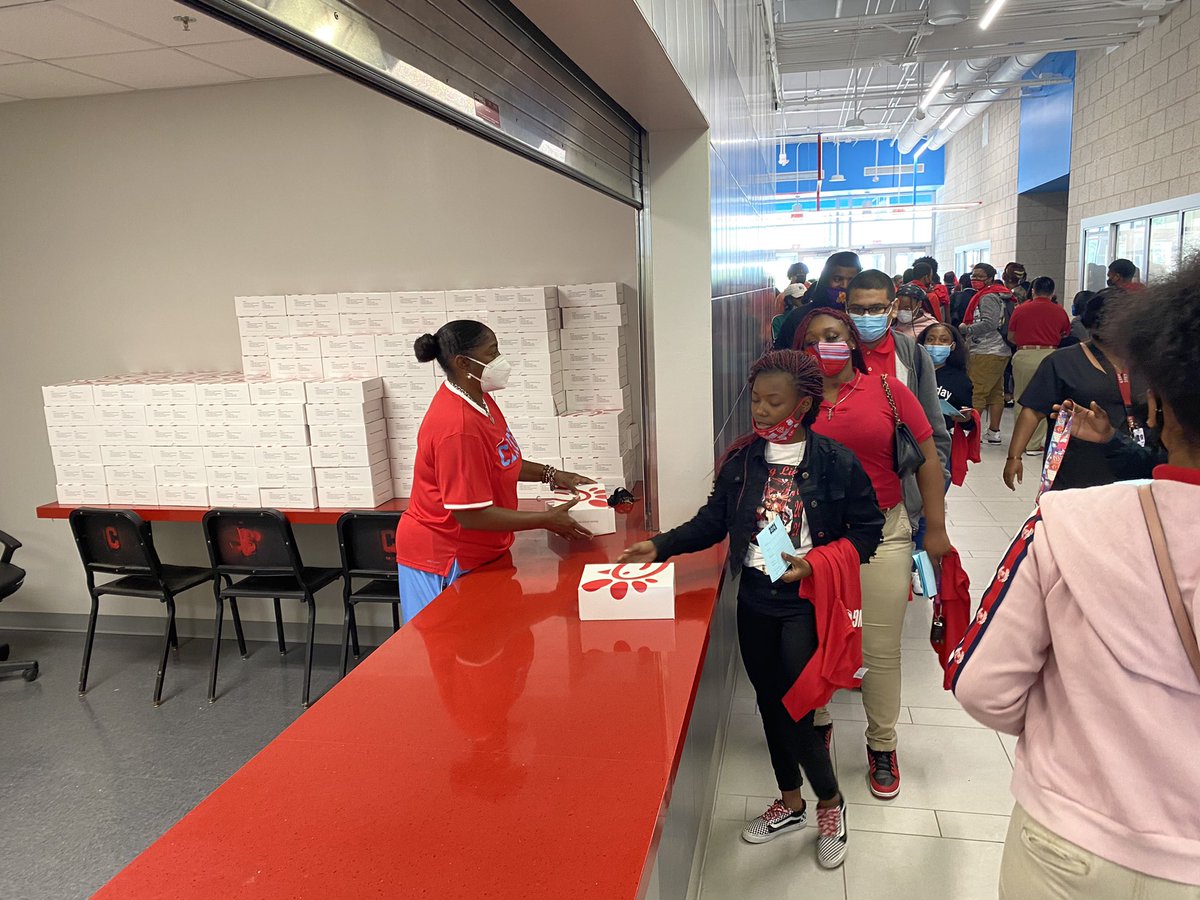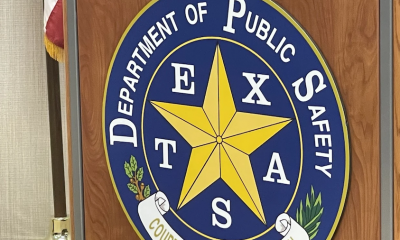Sports
The rise of Carter golf — and how the school inspired change for minority athletes
Published
5 years agoon
By Daniel Wood 
Editor

DALLAS, TX – Lara Alvarenga had a unique trait that made her the top choice to be Carter’s first coach when the Dallas ISD school started its golf program back up during the 2015-16 school year.
The English teacher had been to a golf course. Alvarenga had never played competitively, but her grandfather took her to the driving range when she was growing up.
Carter didn’t have any other options, so Alvarenga took on the challenge and recruited players through her classes. She fit in perfectly with the team of 10 rookies that she assembled, as none of the Carter students had ever played golf before.
Because resources were so meager that first year, cups were sometimes used to practice putting, there were no uniforms at first, practices were held in a field with tall grass and uneven surfaces, and clubs had to be scrounged together from a storage unit. Despite those obstacles, players and coach shared a voracious desire to learn a game that was completely foreign to them — and they showed that golf was available to inner-city students and that minority players could not only fit it, but could excel.
With a team that was all Black, except for one Hispanic player, Carter won a boys district team title and sent that team and one girl to regionals.
“Regionals was a neat experience,” said Alvarenga, who went by Lara Cardinale when she was at Carter, before getting married. “We looked pretty different demographic-wise. But the acceptance that my boys felt, and the camaraderie that was experienced between the teams, and the constant compliments that they were given from other coaches … it was really cool to see.”
This year, with a team that is still nearly all Black, Carter won both team titles at the District 12-4A tournament — the boys by 45 shots and the girls by 77 shots. The only difference is that Carter now has the proper attire, equipment and training to succeed, along with an actual course to practice on, thanks to assistance from local golf clubs and pros. Harrison Frazar, a former member of the PGA Tour who lives in the Dallas area, also helped out.
Most important, by playing for their school, Carter students have access to a sport that might not be affordable otherwise.
“We taught them that it doesn’t matter who you are or where you come from. On the golf course, it’s you and the ball,” said Billy MacLeod, whose wife, Meredith, coached Carter in 2018 and 2019. “Now these kids started feeling accepted in an all-white game. Once they felt like they weren’t outsiders, they embraced it. Now, all of these kids have the opportunity to play.”
In 2019, NBC News cited a study by the National Golf Foundation that stated that only 3% of recreational golfers are African-American — and that drops to 1.5% when it comes to competitive golfers. But all 22 Dallas ISD high schools have boys and girls golf teams, and the school district has worked out partnerships that allow its teams to practice and play tournaments at five city courses — Keeton Park, Tenison Park, Cedar Crest, Luna Vista and Stevens Park.
A successful beginning
Carter’s golf program had been shuttered for a couple of years when Harold Jones restarted it the year after he became the school’s athletic coordinator. All it took was one student showing a desire to play and inquiring about a team for that to happen.
“It bothered me that we didn’t offer golf, even for that one student, so I made it a point to re-establish golf, so that all students have the opportunity to participate,” Jones said. “Since we have started the golf program here at Carter, there have been many partnerships developed that are geared and aimed toward introducing the sport to the inner city and our DISD students. Students not only have access to the course, but it gives them instruction as well.”
When Carter couldn’t go to the course, it found other ways to learn the game. Alvarenga still remembers the rainy day when a golf practice broke out in her classroom during the 2015-16 school year.
Carter players watched game film as if they were football players, only they were viewing highlights of Tiger Woods and other famous golfers, not Tom Brady and Patrick Mahomes. As they watched, the Carter students practiced their swings.
“They moved all of the desks out of the way so they had space,” Alvarenga said. “They were standing there and trying to mimic what they were seeing.”
This year, Carter had the top two boys individual finishers at the District 12-4A tournament — champion Jelani Rogers and runner-up Glen Veasley — as well as the girls district champion, Sherlyn Flores. Those three will compete at the Class 4A Region II tournament that starts Monday for the girls and Wednesday for the boys at Van Zandt Country Club in Canton.
“We kind of stand out,” current Carter coach Cynthia Calahan said about the color barrier. “It has generated interest from other kids. Now that they see these students being very successful and getting attention, it has brought more attention to the sport.”
“They have gotten serious about the game. I have a couple that actually work at a golf course and are able to get some extra hitting in,” continued Calahan, who is in her second year as Carter’s coach. “As soon as we can get back in-person, we’ll be able to do a lot more and get more students interested in golf.”
All of Carter’s players this year chose to do virtual learning, so after the program had grown to 20 players before the pandemic hit in 2020, only nine students competed in 2021. Rogers had never played golf before he was urged to join the team by Meredith MacLeod — who had been his middle school debate teacher — but Rogers shot 89 in the final round at district this year, and the junior said his personal best is 79.
“I got a job at the golf course at Keeton Park [in Dallas], and I just stuck with it,” Rogers said. “The pros at Keeton Park gave me private lessons. When I leave practice here, I go to the course and practice more.”
Opening doors to the game
Carter holds many of its practices at a church next to its school (there is space outside to work on driving and putting), but Cedar Crest is Carter’s home course. When the team practices there, it’s no cost for the players. It would cost $65 for a one-hour lesson (the rate for players 17 and under) or $230 for a two-hour, on-course lesson if they were on their own.
Cedar Crest director of golf Ira Molayo has conducted clinics for Carter players, and the golf course’s I Am A Golfer Foundation has provided paid internships that not only teach students customer-service and business skills, but allow the interns to practice there for free.
“This golf course, in the southeast area of Oak Cliff, is an asset for the city of Dallas that has to be leveraged,” Molayo said. “The first thing we have to do is open doors and be inclusive. That’s not just golf, that’s jobs as well. That’s how you can be a catalyst for change within the community. A team like Carter, that came in and won district after [six] years ago not even having a team, that is a testament to that.”
After Alvarenga left Carter in 2016, the school didn’t field a team the following year. Resources were still deficient when the MacLeods helped start the program back up for the 2018 season.
Only three players had previous golf experience, so Meredith MacLeod had to teach not only the basics of how to play, but the rules as well. There wasn’t enough equipment for everyone, so clubs had to be shared initially. Still, she took her first team to its first competition three weeks after taking over as coach.
When Carter started playing in tournaments in 2018, the team was often placed at the back of the field — because it was expected to play slowly, and not do well — so players couldn’t always finish their rounds. Their coach had to advocate for that to change, and Carter had to start showing progress on the course, before the situation improved.
Frazar used his connections to help Carter obtain clubs from local vendors. Clothing and other equipment came in through donations.
“Nothing about this was your normal conditions,” Meredith MacLeod said. “The only thing that was normal was their passion for the game.
“When I started there, they had like four bags of golf clubs that were awful. When I left, they had over 20 bags fully stocked. We would go out [to Cedar Crest] at least once a week to play. Pros would sometimes show us drills, and on their own, several students kept going up there. Sometimes in golf, it’s not a welcoming sport to everybody. It was good that they were welcoming.”
Frazar, who last played on the PGA Tour in 2015, also provided thoughts on how to grow the game at Carter, and in the inner city.
“It doesn’t have to be Augusta National-type experiences for people to enjoy golf,” Frazar said. “Maybe you only have six or eight kids come out for the team, but maybe just talking to 20 more in a non-intimidating environment is enough to make that kid want to pick up a golf club. It exposes golf to an entirely different area, different demographics. Kids that wouldn’t know about it, all of a sudden, they realize, ‘I can do this.’”
Read Also


Investigators are seeking the identity of the suspect involved in the homicide on Elm Street
Dallas, TX – According to the Dallas Police Department, the shooting occurred around 3:09 a.m. early Sunday morning. It happened in...


The Department of State Health Services is seeking grant applications for the DSHS Federally Qualified Health Center Incubator Program
Plano, TX – According to the state officials, the program grants will help eligible non-profit and public health care providers...


DPS reminds drivers to use extra caution in and around school zones and neighborhoods
Plano, TEXAS – State officials said that this includes knowing the Texas laws about driving near stopped school buses and...


Governor Greg Abbott sent a letter to President Joe Biden in response to a potential “discretionary redesignation” of the Permian Basin by the Environmental Protection Agency
Plano, TX – According to the state officials, the letter reiterates how the EPA is employing flawed logic and data...

